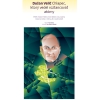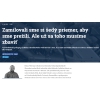Research
Projects

Efficient Photocatalyst for Chemical Degradation of Contaminants: Nanocrystalline TiO2
TiO2 is an efficient photocatalyst for chemical degradation. Nanocrystalline TiO2 is used in the form of film supported on glass substrate. In order to study TiO2 photoactivity, photodegradation of cholesterol is utilized. Cholesterol (C27H46O stated as M), with mass of 386.65 u, is used as a model of bio-organic contamination, because this compound is in almost every living organism. Cholesterol adsorbed on TiO2 surface, activated with water, and irradiated with different ultraviolet (UV) exposure times is characterized by using secondary ion mass spectrometry. A fragment of M–OH represents the intact molecule of cholesterol and provides its relative concentration on the surface. The intensity of M–OH decreases after 24-h UV irradiation, and the level of degradation is 89% with the pseudo-first kinetic constant of 0.0207 min-1 within 2 h. A fragment of MO–H represents an intermediate as one of the cholesterol oxidation products. The irradiation from a bottom in comparison with a top reveals the differences in the mechanisms. The intensities of cholesterol fragment ions M–C5H10, M–C7H14, M–C7H14OH, M + C4H7, M + C4H9O, M + C4H9O2, M + C8H15, and 2 M–2(C8H17), 2 M–2(C7H15) decrease significantly after 7 h of UV exposure. Intensities of M–OH and M–H peaks decrease after 24 h by 88% and 62%, respectively. These measurements show the potential to degrade cholesterol, as a main bacteria membrane component and in such a way to terminate bacteria effectively.
- Prochazka, Michal - Stupavska, Monika - Jerigova, Monika - Velic, Dusan: TiO2 photocatalytic degradation of cholesterol: SIMS study, Surface and Interface Analysis. - Vol. 45, No. 1 (2013), s. 22-26


